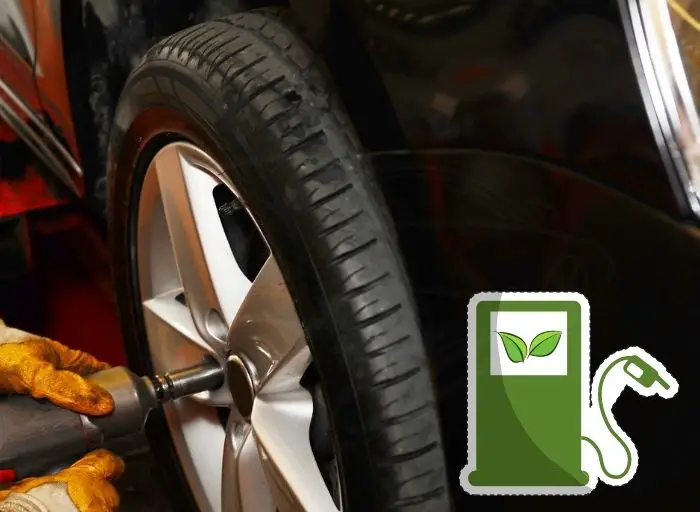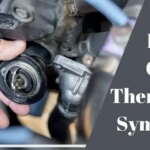
Why does gas mileage drop with new tires? This sounds quite controversial but in fact, it’s true. Let’s look at the reasons for this and how can we increase the fuel efficiency of a car with new tires.
A short answer:
New tires are one of the reasons for gas mileage drop as there is more rolling resistance in new treads than worn-out ones.
Table of Contents
What is rolling resistance?
Rolling resistance is the resistance that is exerted by a rolling tire on its surface. It is basically caused by the friction between the tire and road surface.
This friction occurs from churning the solid rubber material into a gooey paste. This process causes friction which slows down the motion of a moving object. Thus, from an objective point of view, rolling resistance is synonymous to drag – in brief, it’s a form of passenger resistance to motion.
Tire rolling resistance is not directly dependent on the mass of a car.
The rolling resistance of tires and factors that affect it
Tire material: softer tires have lower rolling resistance. Tires with better elasticity, thus with greater ability to absorb energy, have less rolling resistance. And vice versa – tires with lesser elasticity have more rolling resistance as they dissipate energy more effectively.
Tire size: the rolling resistance of a tire increases with its size.
Tire inflation pressure: the lower the inflation pressure, the higher is the rolling resistance.
The finer surface of treads: this one is not so significant as it would seem. However, a very fine tread pattern has slightly higher rolling resistance than an uneven or coarse one.
Why does gas mileage drop with new tires?
The full tread of new tires causes the gas mileage to reduce as it increases the rolling resistance of a car. Fresh tires have a new, fine surface and it is not as efficient as an uneven, worn-out surface.
Thus, driving with new tires is not environmentally friendly but on the other hand, our cars are much safer and can’t slip from wet or icy surfaces.
Should we use low rolling resistance tires?
Low rolling resistance tires have an uneven tread pattern and a softer rubber compound, thus they have lower rolling resistance. Thus, even though it would seem that this would affect the performance of tires negatively, in fact, it does not happen.
Research reveals that using low rolling resistance tires bring a number of benefits to users:
- Better fuel efficiency (can save fuel up to 10% according to The U.S. Department of Energy)
- Lower road noise.
- Improved handling and cornering capabilities in wet or icy road conditions.
- Better braking distance and wet braking performance.
- Enhanced safety on wet and icy roads as the car can stop at shorter distances.
- Longer tread wear of tires (about 10% longer).
Most users are pleased with the results they get from the use of low rolling resistance tires but there is one major problem they may encounter. These tires wear down faster than the conventional ones. Due to the fact that the tread pattern is not as flat as the normal tires, it is more likely for them to skid, slip and slide.
This problem is relatively common with all tires and it may be resolved by increasing the inflation pressure. This can be done by raising the tire in 4-5 PSI when using low rolling resistance tires. The use of low rolling resistance tires requires more frequent tire rotation and inspection.
How to improve fuel economy with tires?
There are a number of things you can do to increase gas mileage with a new set of tires and you decide what is best for your own needs.
The first thing is to take care of your tires properly. Clean them regularly, change the air filter and check whether they have damage to the part that touches the road – the tread edges!
Another important step you should take, especially when changing your tire or if it doesn’t fit properly, is checking it for cracks.
Maintaining the correct inflation pressure is another way to improve the gas mileage as this helps to reduce the rolling resistance.
Other Methods to Improve Gas Mileage
Other than tires, there are a number of things you can do to improve your car’s gas mileage.
As there is no one perfect solution, it is important that you do not make any drastic changes to the engine and drive train of your car.
Firstly, by properly maintaining your brakes, you can reduce the amount of rolling resistance in the vehicle resulting in increased gas mileage. Secondly, by properly maintaining the engine, you will get better fuel economy.
If you check with your vehicle’s performance to see if there is anything that could be improved and change it accordingly, you could increase gas mileage.
Conclusion
In a nutshell, your gas mileage will drop with a new set of tires, however, this also depends on what type of tires you use and the amount of rolling resistance in the tires. However, if your car does not have low rolling resistance tires, it is better to use those instead of new ones and to lower the inflation pressure in them.
Hi there! I’m Naomi O’Colman. I’ve got years of experience working at an auto repair shop here in Texas under my belt. On top of that, ever since I was a kid I’ve been passionate about the auto industry. Since I’ve joined the team at automotivegearz.com I’ve been enthusiastically sharing my passion and insights with my readers. I’m dedicated to delivering high quality content and helping you stay up to date with the latest automotive trends and products out there!







